
Mycoustics
An exploration into mycelium as a biomaterial.
Mycelium is the root structure of a mushroom. It grows in soil or on substrates such as wood, straw and coffee granules. Here I have experimented with varying substrates from food waste to plastic mesh materials. It is a biodegradable and non-toxic material that can be used for insulation, sound absorption and fire-resistance. Through a cheap and fast-growing process the mycelium can be moulded into usable products such as packaging, furniture, lamps and acoustic panels. It can also be used to make a leather-like product. This biomaterial produces all this while sequestering carbon. Mycelium has a major part to play in our sustainable future.

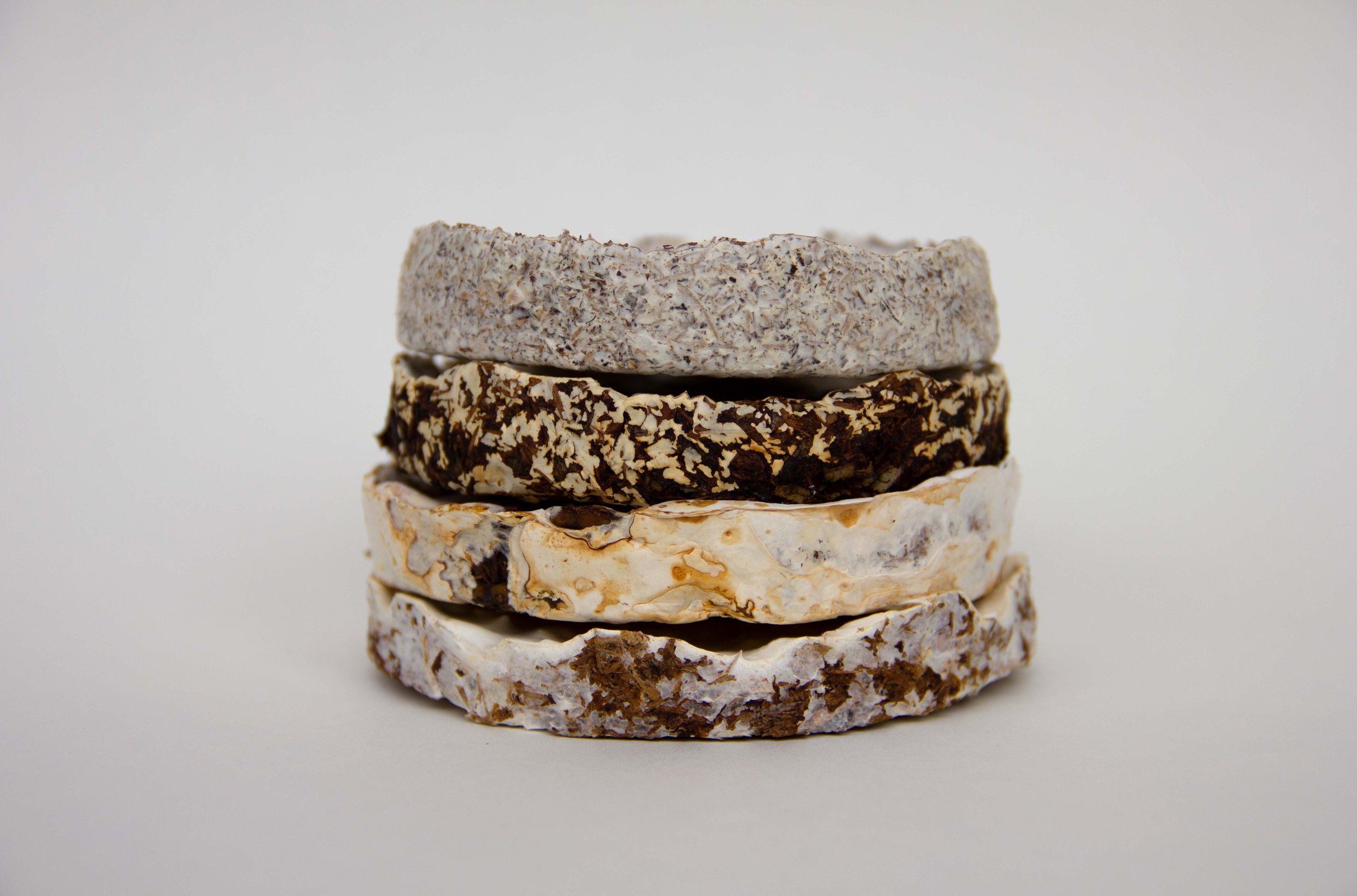
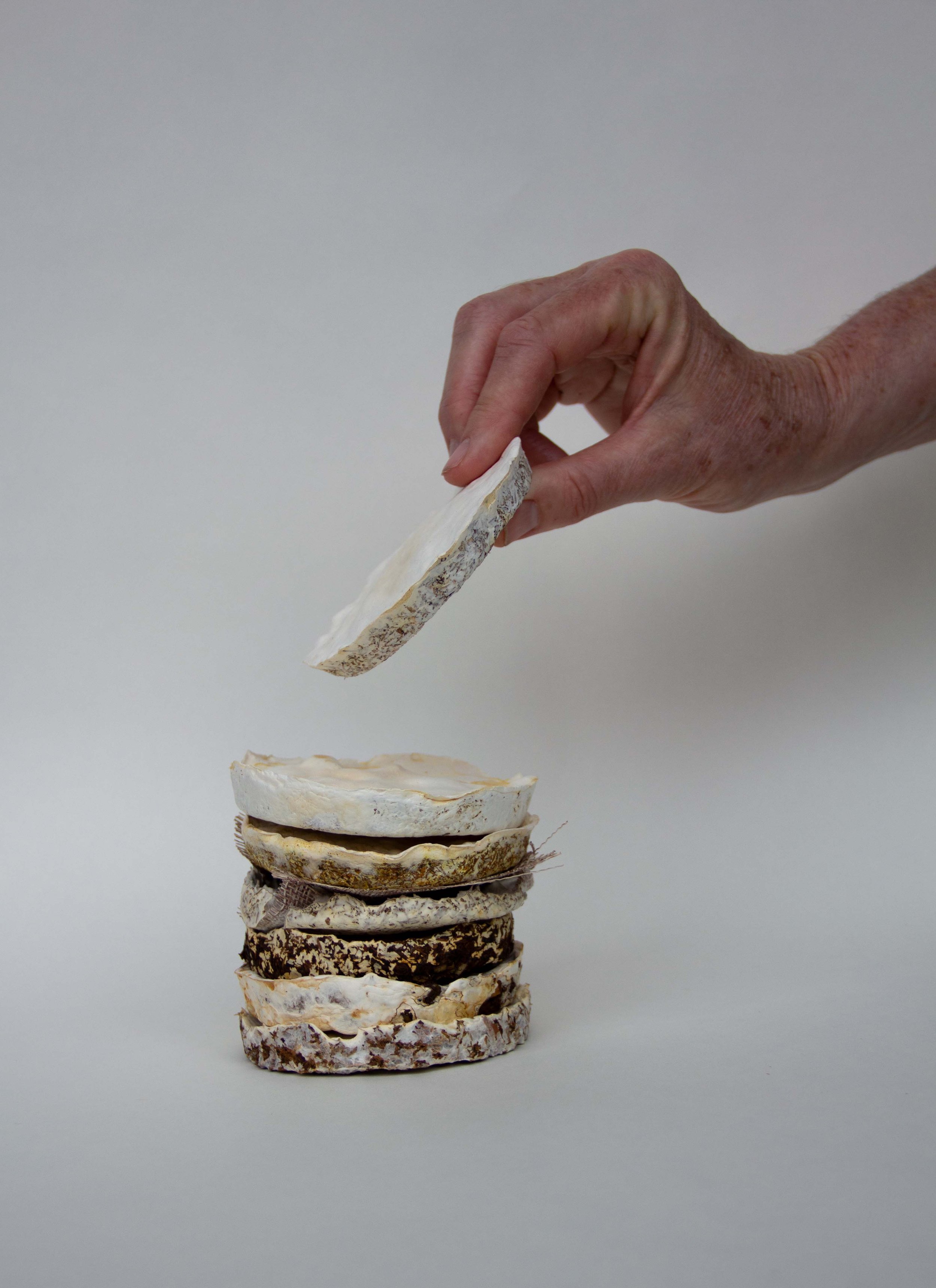

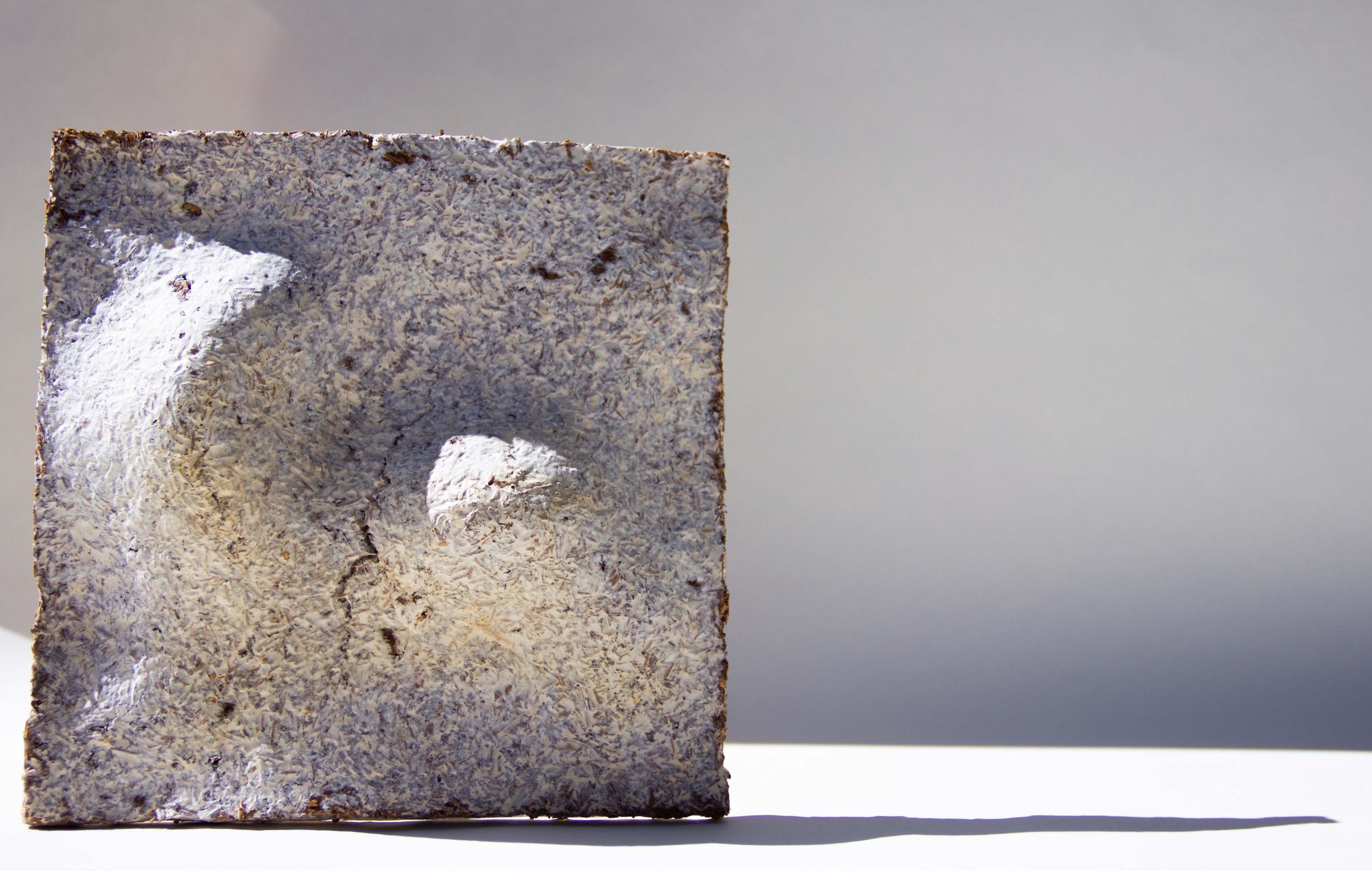

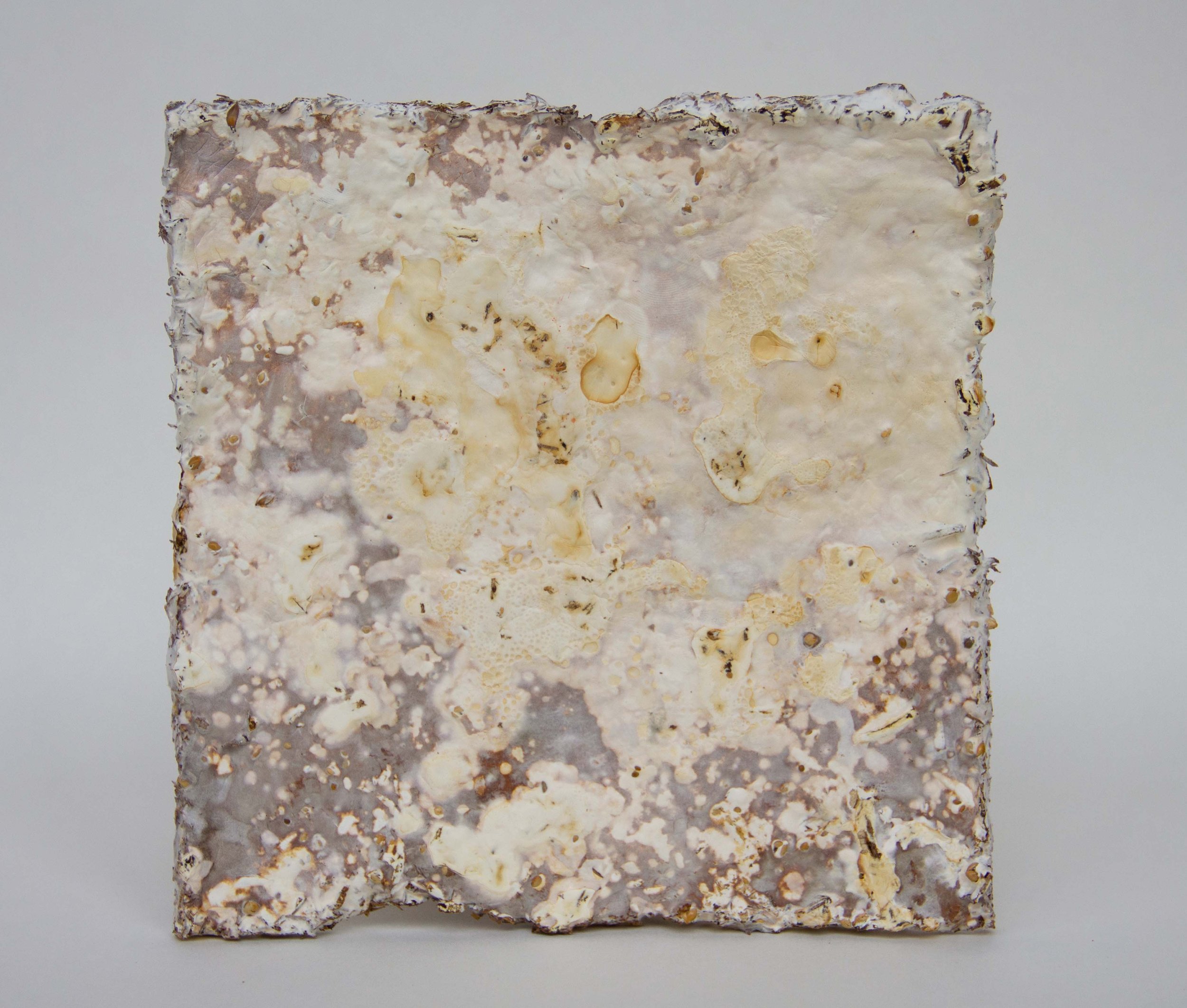
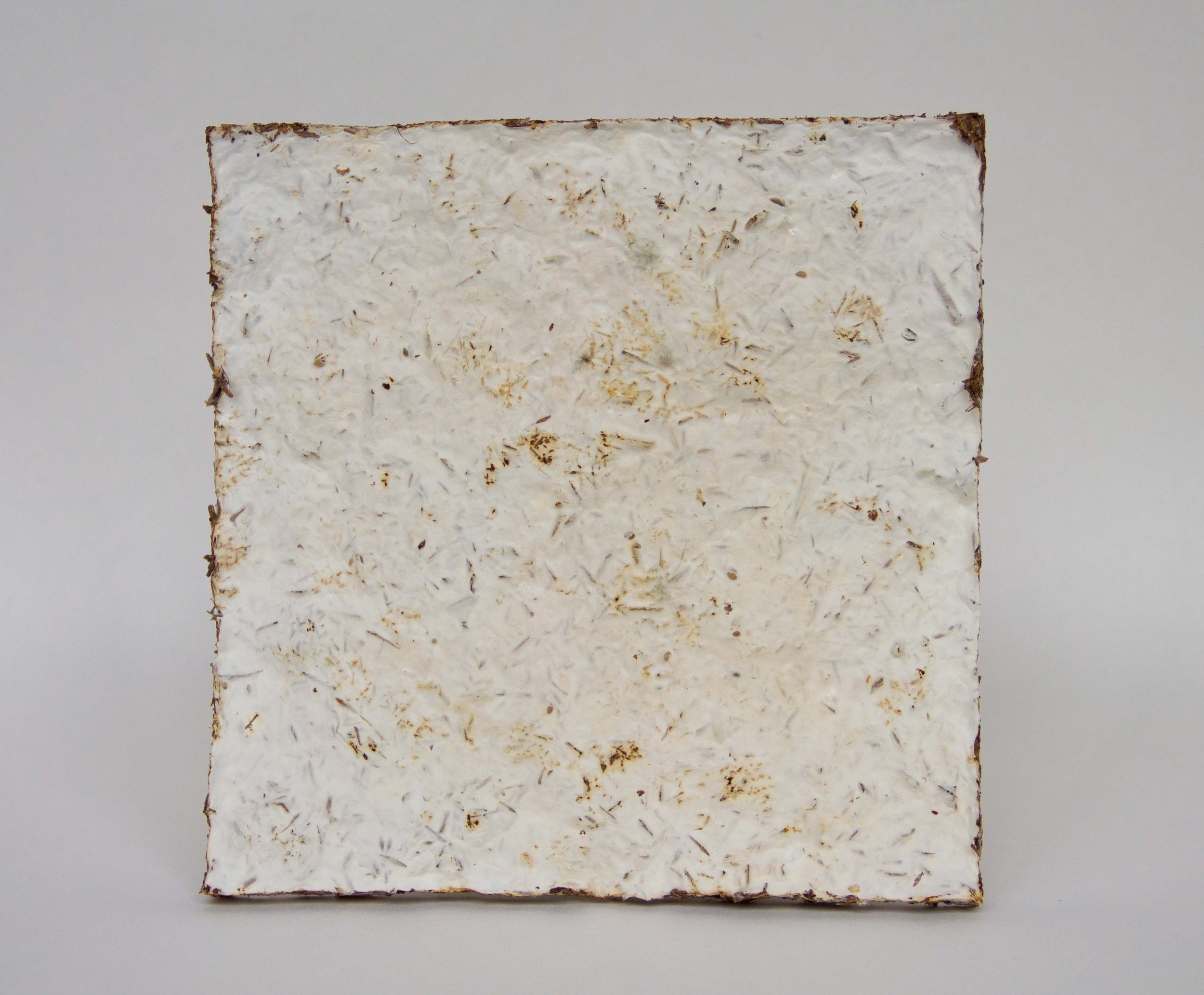
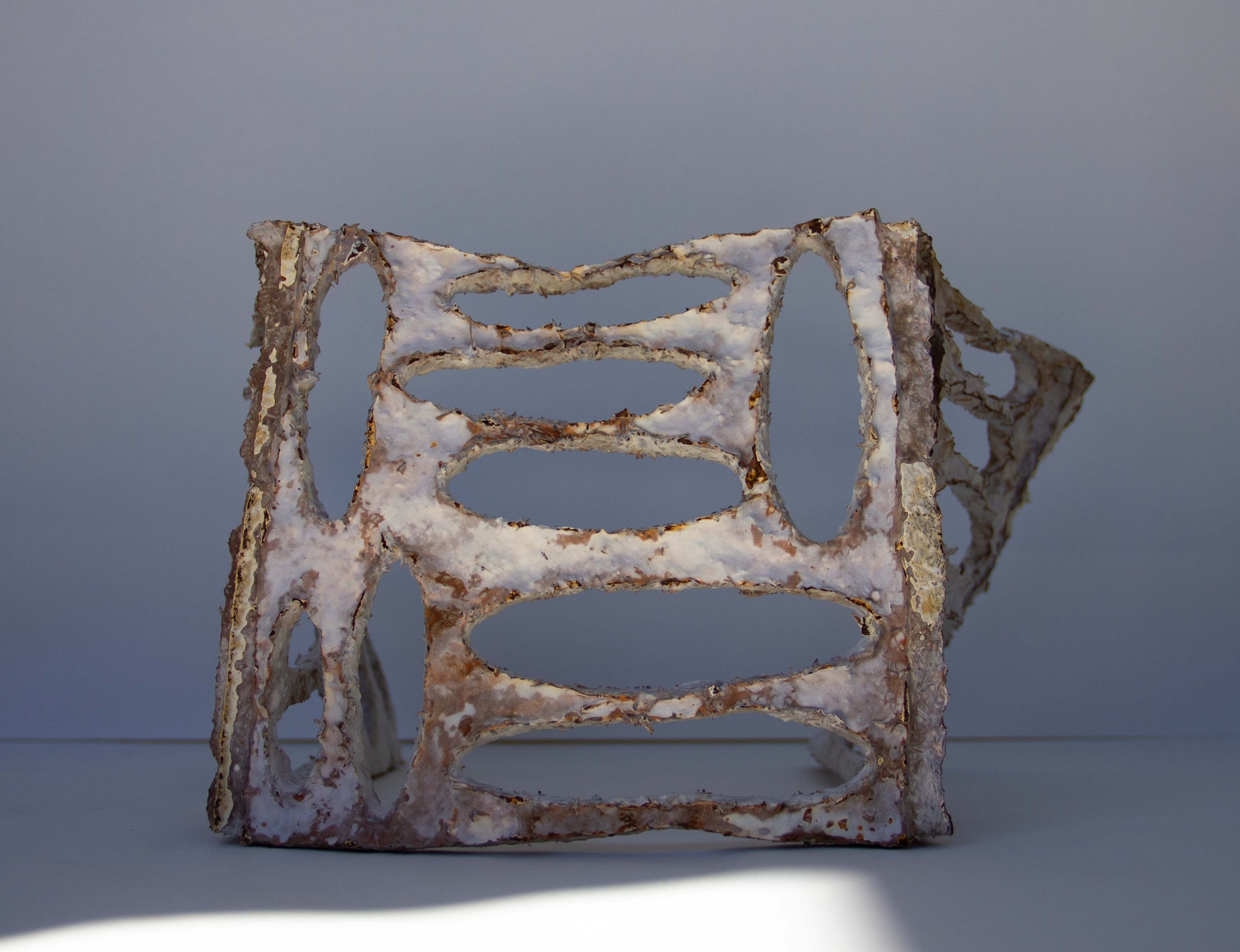
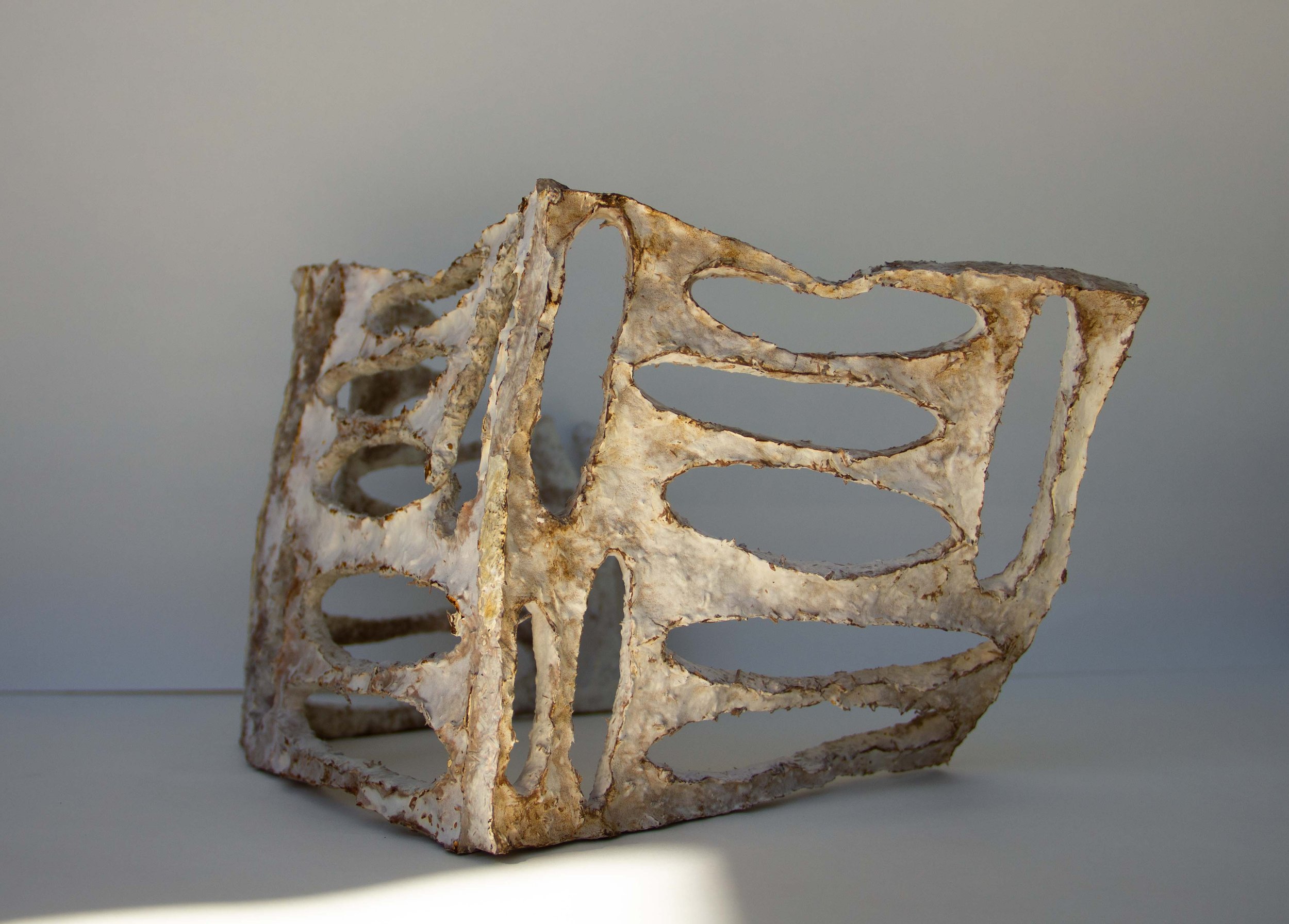
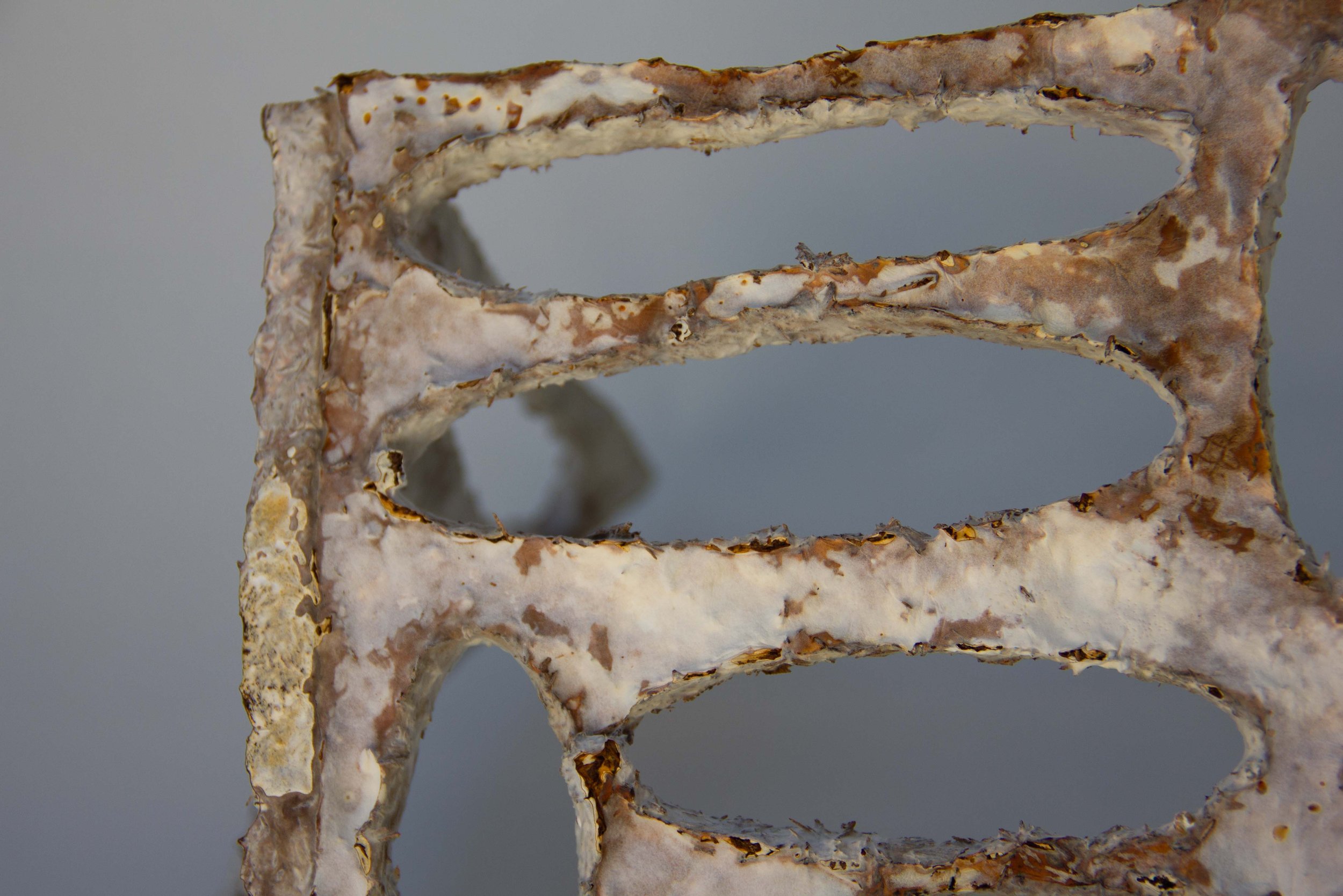
What is Biodesign?
Put simply, biodesign is the collaboration and intersection between biology and design. This interface of biology and design is leading the path to new sustainable paradigms. Biodesign is about questioning and understanding humanity’s relationship with nonhumans, a curiosity of what the future may become. It is also about understanding what it means to be human and our ethical responsibilities when it comes to experimenting with biodesign.
Biodesign works on various scales from cells, to microbial, to multi-species interactions and with that scale shift comes an increase in ethical, environmental, and political responsibilities. There needs to be a balance between curiosity and critique, and desire to care for and maintain what remains.
A physical artefact or object has the power to make human beings feel one way or another. Each object or ‘technology’ can influence human perception, to then influence their role and further interactions or interventions. Biodesign uses this power to visualise concepts and conceptualise ways of living more sustainably. Biologist and artist, Elizabeth Henaff believes biodesign can develop instruments and interfaces that mediate this new understanding.1 A new understanding or feeling that is about developing an intuitive perception through careful observation alongside an empathy that grows with establishing a relationship.
Biodesign is also about relationships. Relationships related to the idea of social design set on a longer timescale. Historian, William Myers believes that biodesign is a practice that cultivates empathy across species and is fuelled by cross-disciplinary cooperation.2 If we use this method for improving the relationship within and between species collaboratively, and integrated, we can work towards socially and environmentally positive results.
1. Henaff, Elizabeth. “What Biodesign Means to Me.” Biodesigned: Issue 2, 16 July, 2020. Accessed August 3rd, 2021.
2. Myers, William. “What Biodesign Means to Me.” Biodesigned: Issue 6, 17 March, 2021. Accessed August 3rd, 2021.